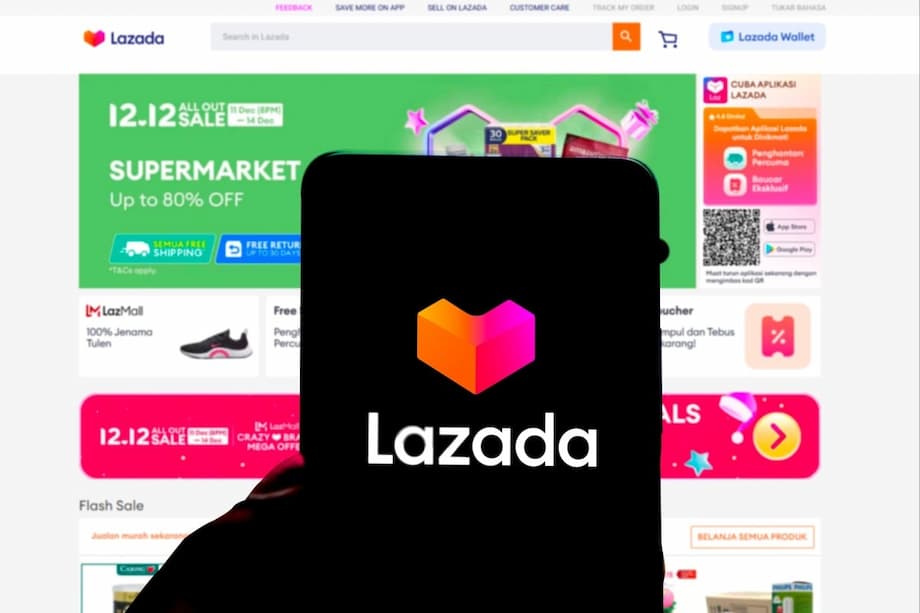How the new Tmall to Lazada bridge works
Alibaba has switched on a direct link between Tmall, its premium marketplace in China, and Lazada, its ecommerce arm in Southeast Asia. The new setup gives invited Tmall brands a way to reach shoppers in Singapore, Malaysia, Thailand, Vietnam, and the Philippines without opening new local stores or hiring teams in each country. Instead of building from scratch, participating sellers ship inventory to a designated warehouse in China, and Lazada takes care of the rest from listings to last mile delivery.
- How the new Tmall to Lazada bridge works
- Why Alibaba is pushing harder overseas
- What Lazada handles for merchants
- Which brands and categories are going first
- The Southeast Asia market opportunity and competition
- Regulatory considerations and why Indonesia is not on the initial list
- What success would look like for brands and shoppers
- What to watch next
- The Bottom Line
The connection is designed to remove common barriers for cross border selling. Lazada creates and manages local listings, translates product information using artificial intelligence, and sets country specific prices that account for currency exchange, duties, taxes, and platform margins. Customer service is handled in local languages, and Lazada manages sales operations on its own storefronts in each market to present a familiar shopping experience for consumers.
Merchants are being onboarded by invitation during an initial phase. Global names such as Harman International and Spalding have already joined, alongside consumer brands like Bananain, Babycare, Philips, and Lock&Lock. Internal project details describe this as a system level integration between Tmall and Lazada. Sellers that accept the invite can see a LazMall storefront, modeled on their Tmall presence, populated automatically with AI translated titles and descriptions. The platform arranges international shipping and customs clearance, while aftersales support is delivered locally. For early stage participation, the program emphasizes a low cost, low commitment entry, with the flexibility to move toward deeper localization once sales stabilize.
A turnkey route for cross border sales
Cross border ecommerce typically involves multiple set up steps, from signing with logistics providers to navigating tax rules and return policies in each market. By centralizing inventory in China and letting Lazada manage commercial operations, Alibaba is trying to compress that complexity into what invited sellers see as a one click export option. Project materials indicate that cross border return costs after goods leave China will be covered by the platform, which reduces a key friction for brands that worry about reverse logistics. The idea is to let merchants test demand quickly, then layer on services such as targeted marketing or local warehousing when a country proves promising.
Why Alibaba is pushing harder overseas
Alibaba has been channeling more energy into international retail as growth inside China slows and domestic competition intensifies. The company regrouped into distinct business units and put more capital behind platforms that attract shoppers beyond China, including Lazada, AliExpress, Trendyol, and Daraz. In a recent financial update, the international ecommerce business reported strong double digit revenue growth compared with the previous year, helped in part by AliExpress Choice and broader cross border demand. At the same time, the company signaled that some of these gains come with higher investment, which pushed up losses in the international division for a period.
Leadership has tied this push to a larger technology bet on AI. Alibaba is weaving AI into translation, search, recommendations, dynamic pricing, and merchant tools. Those same capabilities are visible in the Tmall to Lazada connection, where AI translated listings and local price optimization sit at the core of the offer.
Alibaba chief executive Eddie Wu has framed the next phase as one that blends product innovation, infrastructure, and regional reach. In comments to investors, he underscored the scale of the commitment to AI.
Eddie Wu, CEO of Alibaba, said the company will invest more in AI over the next three years than it did in the past decade, aiming to integrate advanced models across commerce and cloud services.
The Tmall to Lazada pipeline aligns with that strategy. It gives Alibaba a way to monetize AI where it has immediate commercial impact, while deepening Lazada’s catalog and seller base in markets where the group wants faster growth.
What Lazada handles for merchants
Onboarding and logistics
Invited Tmall sellers do not register new local entities or build separate stores. They send products to a designated hub in China. Lazada arranges international shipping to each country, handles customs clearance, and organizes last mile delivery through its logistics partners. This model lets brands start with centralized inventory while they gauge demand patterns by market and category. If certain countries outpace others, Lazada can advise on stocking strategies or optional local warehousing in later stages.
Store operations and customer service
Lazada builds and maintains the local product pages, using AI to translate titles, attributes, and descriptions into the relevant language. Country teams set local prices that reflect foreign exchange rates, taxes and duties, and the platform’s commission. The storefronts are adapted to each market’s norms for promotions, payment methods, and shipping promises. Customer service is delivered in local languages for pre sales questions, order tracking, and aftersales issues, which is critical in markets where buyers prefer chat based or app based support.
Returns and risk sharing
Cross border returns can be a deal breaker if costs are pushed onto merchants. Project details indicate that return shipping for goods that have left China will be absorbed by the platform, which lowers risk for participating brands. Lazada also coordinates warranty terms and service standards so that buyers have a consistent experience across markets. That framework helps reassure first time customers, who may be new to a brand but are comfortable with Lazada’s protections and payment tools.
Which brands and categories are going first
The initial cohort includes electronics and audio gear from Harman International, sports equipment from Spalding, home and baby care products from Bananain and Babycare, and household names such as Philips and Lock&Lock. These categories mirror shopper demand on Lazada, where home appliances, beauty, fashion, electronics, and sports equipment are among the most searched items. The program’s invite phase tilts toward established brands with recognized quality and stable supply, which can compress onboarding timelines and give Lazada immediate catalog depth.
Lazada is also pushing deeper into premium segments. Executives have courted European fashion houses to expand their reach in Southeast Asia through LazMall Luxury. Jason Chen, Lazada’s chief business officer, described the rationale in a recent discussion about the company’s goals.
Jason Chen said the current push to broaden the luxury segment will fuel growth and reinforce Lazada’s brand positioning in the region.
Chen also stressed that brands want control when they build a presence on a marketplace. He pointed to a model that is familiar to labels that sell on Tmall.
Jason Chen explained that when a company opens its own online store on Lazada, it manages operations from pricing to logistics, which is crucial for fashion houses.
That approach makes it easier to extend Tmall playbooks to Lazada, while letting global brands calibrate how much control to keep in each country.
The Southeast Asia market opportunity and competition
Southeast Asia’s digital economy continues to expand, supported by mobile internet usage and a growing middle class. The US International Trade Administration has estimated that the region’s internet economy will exceed 330 billion dollars this year. Ecommerce remains a key growth engine inside that total, with market forecasts pointing to rapid gains through the middle of the decade. The countries targeted in the initial Tmall to Lazada rollout are among the most active for cross border shopping, both for daily essentials and for premium goods that may be hard to find locally.
Competition is intense. Shopee leads in several countries and continues to invest heavily in logistics networks and seller incentives. TikTok Shop has resurfaced in Indonesia with a partnership model and is growing across the region with live shopping and short video commerce. Price sensitive shoppers often compare offers across apps, which makes assortment breadth, delivery speed, and returns policy critical differentiators. Lazada’s bet is that direct access to Tmall’s brand pool, combined with localized operations and AI enabled merchandising, will give it more to work with in category battles that are decided by selection and service rather than pure subsidies.
Payments and trust also matter. Shoppers in Southeast Asia use a mix of digital wallets, bank transfers, buy now pay later, and cash on delivery. Marketplaces that present familiar checkout flows and responsive support see higher repeat rates. By absorbing key parts of the cross border burden and leading with known brands, Lazada aims to keep conversion rates high while it scales the program.
Regulatory considerations and why Indonesia is not on the initial list
Indonesia is a core market for Lazada, yet it is absent from the initial list of countries for the Tmall program. The likely explanation is regulatory complexity. Indonesia has tightened rules for cross border trade and social commerce and has requirements for product categories, import documentation, and local compliance that are stricter than in neighboring markets. Companies often tailor country specific models that blend local sourcing with cross border shipments to meet those standards. A future phase may adapt the Tmall flow for Indonesia once the operational design fits local rules.
What success would look like for brands and shoppers
The initiative is pitched as a low friction way to test new markets. For brands, early success will mean predictable shipping times, consistent customer ratings, and healthy reorder trends by country. If sales concentrate in one or two markets, brands can invest in dedicated marketing and, over time, local warehousing to cut delivery times. The platform’s promise to handle returns and local service should translate into stronger buyer confidence and fewer abandoned carts.
Performance will also depend on product fit and category. Electronics and home appliances benefit from Tmall’s credibility on authenticity and warranty support. Beauty and fashion rely more on style cycles, influencer marketing, and local sizing. AI translated listings help with speed, yet brands still need to localize images, sizing charts, and care instructions to reduce returns. The path to scale looks different in each case, which is why the program starts with a lightweight model and then adds concierge style services as sales grow.
- Shipping time and visibility. Predictable end to end tracking and clear delivery windows reduce customer service load and increase repeat purchases.
- Local pricing discipline. Prices must reflect taxes and duties while remaining competitive against local alternatives and flash deals from rivals.
- After sales experience. Warranty claims, chat response time, and return handling shape ratings, which in turn drive search placement and conversion.
- Marketing efficiency. Performance ads, vouchers, and search optimization need to be tuned to each country’s shopping calendar and cultural events.
What to watch next
Several milestones will show how far and how fast the program scales. The first is whether the invitation phase opens to a broader set of Tmall sellers, including small and medium sized brands. A second is how quickly Lazada expands categories beyond the early mix of electronics, home, and baby care into beauty, fashion, and luxury at scale. A third is whether Indonesia is added once an approach that satisfies local requirements is in place. Watch also for optional services such as country specific warehousing, faster delivery badges, and on platform marketing packages that mirror what large brands use on Tmall.
Another area to track is how AI is embedded deeper into pricing, content, and service. Alibaba has said it is investing heavily in AI across the group. As models improve, merchants could see better automated translations, localized size recommendations, and smarter return prevention through clearer pre purchase information. Those gains can unlock higher conversion without heavy discounting.
The Bottom Line
- Alibaba linked Tmall directly to Lazada to let invited Tmall merchants sell in Singapore, Malaysia, Thailand, Vietnam, and the Philippines.
- Brands ship inventory to a warehouse in China while Lazada manages listings, AI translations, pricing, taxes, logistics, and local customer service.
- Early participants include Harman International, Spalding, Bananain, Babycare, Philips, and Lock&Lock.
- The program starts as invite only and positions itself as a one click export option with cross border return costs covered by the platform.
- The move supports Alibaba’s strategy to grow international commerce while deploying AI across operations.
- Lazada is using the link to deepen assortment and push into premium segments, while competing with Shopee and TikTok Shop.
- Regulatory complexity likely explains why Indonesia is not in the initial rollout.
- Key signals to watch include broader seller access, category expansion, optional local warehousing, and faster delivery options.




